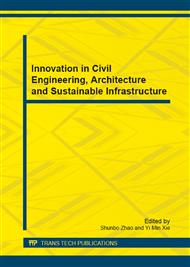p.818
p.823
p.826
p.833
p.838
p.844
p.848
p.852
p.856
The Seismic Behavior of High-Strength Concrete Frame Joints
Abstract:
By studying the two high-strength concrete frame joints by means of experimental investigate and finite element analysis with the low cycle reversed loading method, it discussed the influence of the steel fiber on the seismic behavior of the high-strength frame joints. The result shows that, mixed with steel fiber can enhance the constraint of the concrete at the joint core area, improve the seismic behavior. Amount of steel fiber can replace part of the stirrup.
Info:
Periodical:
Pages:
838-843
Citation:
Online since:
November 2012
Authors:
Price:
Сopyright:
© 2012 Trans Tech Publications Ltd. All Rights Reserved
Share:
Citation:


